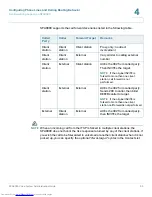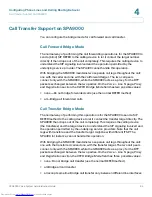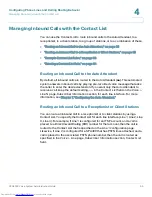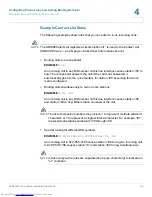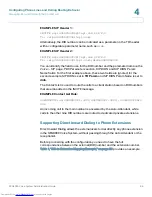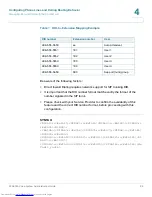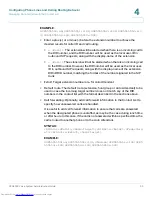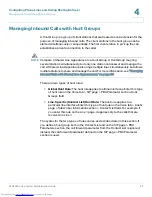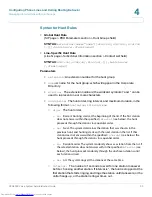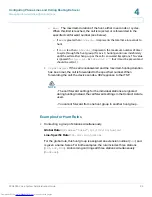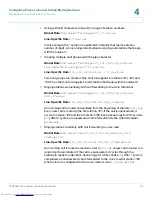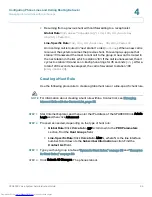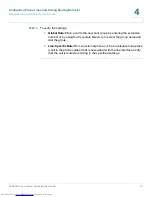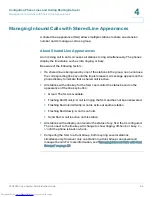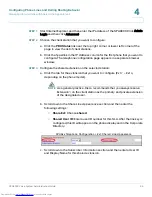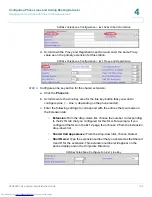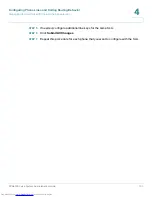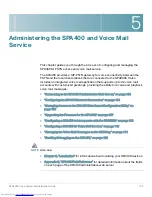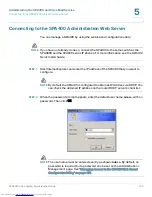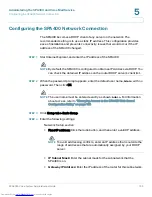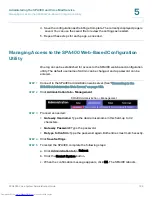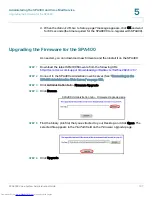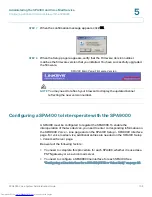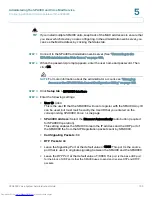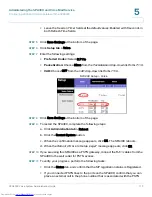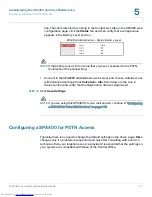
Configuring Phone Lines and Calling Routing Behavior
Managing Inbound Calls with Hunt Groups
SPA9000 Voice System Administration Guide
96
4
•
Resuming from a previous hunt with call forwarding to a receptionist
Global Rule:
500:name=”Scheduling”,102,103,101,hunt=ne;
45;240,cfwd=100
Line-Specific Rule:
102,103,101,hunt=ne; 45;240,cfwd=100
An incoming call is routed in “next station” order (
hunt=ne
). When a new call is
received, the system resumes the previous hunt. For example, suppose that
station 103 answered the most recent call to the group. A new call is routed to
the next station in the list, which is station 101. If the call is unanswered, then it
cycles to station 102, and so on. Each phone rings for 45 seconds (
45;
). After a
total of 240 seconds has elapsed, the call is forwarded to station 100
(
240,cfwd=100
).
Creating a Hunt Rule
Use the following procedure to create a global hunt rule or a line-specific hunt rule.
NOTE
For information about creating a hunt rule within a Contact list, see
Managing
Inbound Calls with the Contact List, page 85
.
STEP 1
Start Internet Explorer, and then enter the IP address of the SPA9000. Click Admin
Login and then click Advanced.
STEP 2
Proceed as needed, depending on the type of hunt rule:
•
Global Rule:
Click
Voice tab >
SIP. Scroll down to the
PBX Parameters
section. Find the
Hunt Groups
field.
•
Line-Specific Rule:
Click
Voice tab >
Line
N
, where
N
is the line interface
number. Scroll down to the
Subscriber Information
section. Find the
Contact List
field.
STEP 3
Type your hunt group rule. See
“Syntax for Hunt Rules,” on page 93
and
“Examples
for Hunt Rules,” on page 94
.
STEP 4
Click Submit All Changes. The phones reboot.
Downloaded from
www.Manualslib.com
manuals search engine


